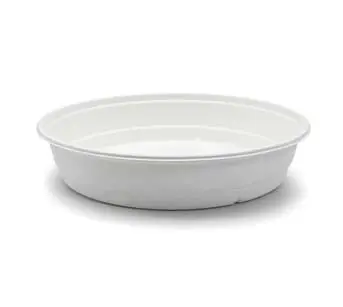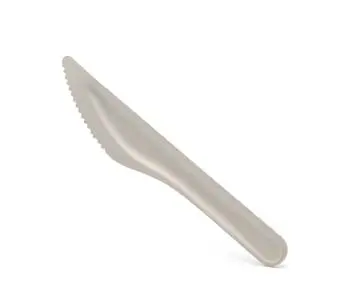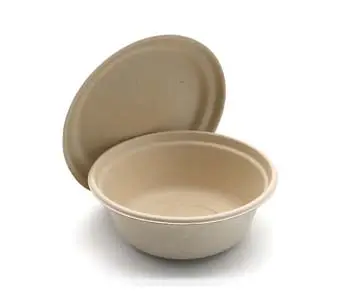When it comes to sustainable packaging solutions, supplier bagasse food trays are emerging as a commendable choice in the market. These trays offer an eco-friendly alternative to traditional plastic or Styrofoam packaging, while still maintaining their functionality and durability. Derived from bagasse, a biomass material obtained from sugarcane stalks after juice extraction, these food trays present a multitude of benefits for both the environment and consumers.
To meet the growing demand for sustainable packaging, many businesses are turning to wholesale bagasse trays as a viable solution. These trays not only offer the convenience and reliability of traditional food packaging but also align with the eco-conscious values of consumers, making them an excellent choice for businesses looking to make a positive environmental impact.
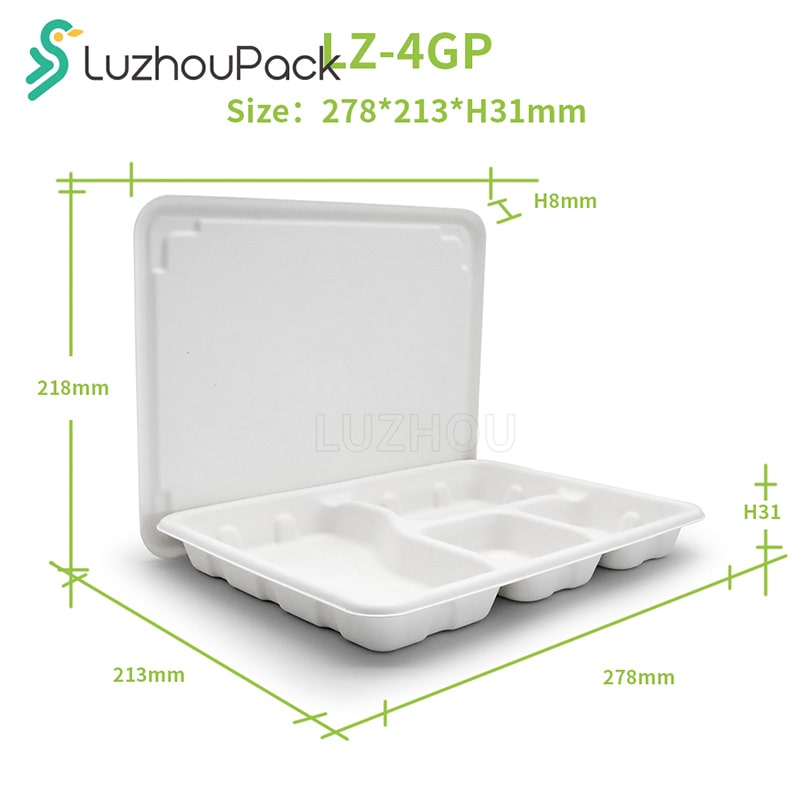
Definition and Purpose of Bagasse Food plate
Bagasse food trays are containers made from the fibrous residue left behind after sugarcane processing. This residue, known as bagasse, is transformed into pulp and molded into various tray shapes and sizes that can be used for serving or packaging food items. The purpose of these trays is two-fold: providing a reliable means of transporting and presenting food products while also addressing the pressing need for sustainable packaging solutions.
Importance of Sustainable Packaging Solutions
In today's world where environmental concerns are at the forefront of discussions, finding sustainable packaging options is essential. The rampant use of single-use plastic has led to devastating consequences such as pollution and harm to wildlife.
By opting for supplier bagasse food trays instead, we take an active step towards reducing our reliance on non-biodegradable materials that contribute to this global issue. Sustainable packaging not only helps preserve our planet but also sends a strong message about responsible consumption and corporate social responsibility.
Furthermore, sustainable packaging aligns with shifting consumer preferences towards more environmentally conscious choices. People are becoming increasingly aware of ecological issues and actively seek products that have minimal environmental impact.
By embracing supplier bagasse food trays in businesses or households, we demonstrate our commitment to sustainability while meeting growing consumer demands. Overall, supplier bagasse food trays represent a significant shift towards sustainable packaging solutions that benefit not only our planet but also consumer perception and business reputation.
Opting for sugarcane bagasse disposable bowls is a clear demonstration of our dedication to sustainability, meeting the increasing expectations of environmentally conscious consumers. By making this choice, businesses and households can contribute to a greener future, enhancing consumer perception and establishing a positive reputation as champions of sustainable practices.
Overview of Bagasse Material
Definition and Origin of Bagasse
In the realm of sustainable packaging, bagasse has emerged as a remarkable material. Derived from sugarcane, bagasse is the fibrous residue left after extracting juice from the sugarcane stalks. This abundant biomass resource is often considered waste in the sugar industry.
However, its potential as a raw material for various applications, including food trays, has gained significant recognition in recent years. Bagasse serves as an eco-friendly alternative to conventional materials like plastic or Styrofoam, making it a popular choice among environmentally conscious consumers and businesses.
Characteristics and Properties of Bagasse Material
Bagasse possesses a range of unique characteristics that contribute to its popularity as a packaging material. One notable feature is its renewable and biodegradable nature.
As a byproduct of sugarcane production, bagasse offers an excellent example of utilizing agricultural waste effectively while minimizing environmental impact. Thanks to its natural composition, bagasse can undergo decomposition through biological processes over time, ensuring minimal harm to ecosystems.
Moreover, bagasse exhibits remarkable sturdiness and durability. Its fibrous structure provides inherent strength that allows for the creation of robust food trays capable of handling various culinary delights without compromising structural integrity.
These trays are capable of withstanding high temperatures without warping or losing shape when exposed to hot liquids or steamy dishes. With its renewable and biodegradable nature combined with impressive strength and durability properties, bagasse stands out as an exceptional material for supplier food trays that are both eco-friendly and reliable in their functionality.
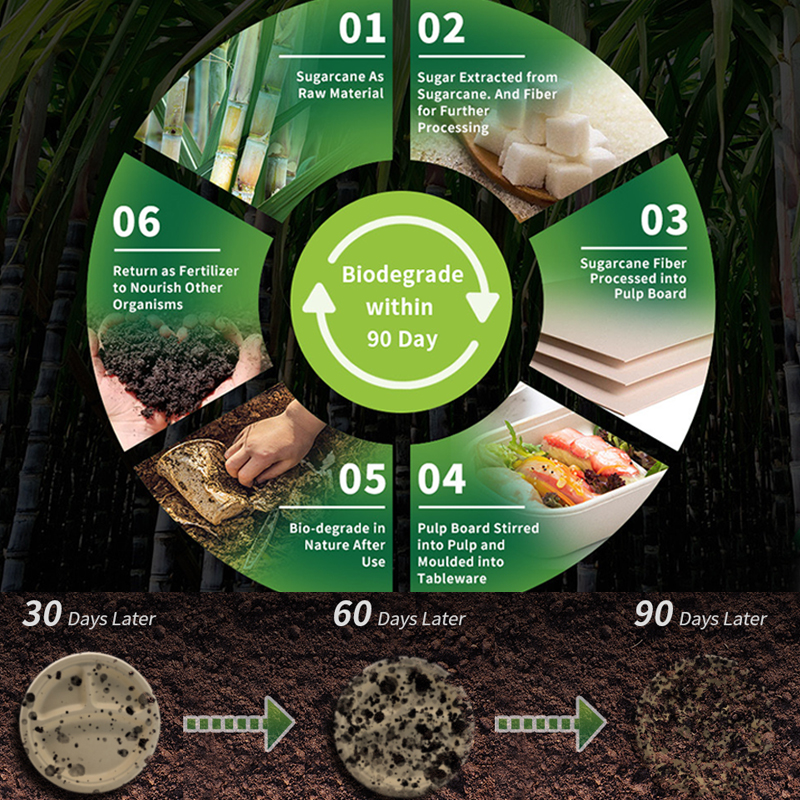
Advantages of Supplier Bagasse Food Trays
Environmental Benefits
Subtitle: A Sustainable Solution for a Greener Future Supplier bagasse food trays offer numerous environmental benefits, making them an excellent choice for eco-conscious businesses and consumers. One remarkable advantage is the significant reduction in plastic waste generation.
By opting for bagasse trays, we can mitigate the detrimental impact of excessive plastic use on our environment. Unlike traditional styrofoam or plastic trays that persist in landfills for centuries, bagasse trays are made from a renewable resource and are fully biodegradable.
With biodegradable sugarcane bagasse plates, we can take significant steps towards reducing the harmful consequences of excessive plastic consumption and waste. These eco-friendly alternatives offer a sustainable solution as they decompose naturally, leaving no long-lasting impact on the environment compared to traditional styrofoam or plastic trays that contribute to pollution and landfill overflow.
Furthermore, these eco-friendly trays contribute to a lower carbon footprint compared to their counterparts. The production process of styrofoam involves the extraction and refining of fossil fuels, while plastic manufacturing is energy-intensive and produces harmful greenhouse gas emissions.
In contrast, supplier bagasse food trays are derived from sugarcane byproduct (bagasse), a readily renewable resource that reduces the reliance on non-renewable materials. This sustainable alternative helps combat climate change by minimizing carbon emissions and preserving valuable natural resources.
Functional Benefits
Subtitle: Elevating Practicality with Exceptional Features Beyond their positive environmental impact, supplier bagasse food trays also offer remarkable functional benefits that enhance the dining experience for both consumers and businesses alike.
One key feature of these trays is their heat resistance properties, making them ideal for serving hot food items such as steaming soups or freshly baked goods. The sturdy composition of bagasse material ensures that it can withstand high temperatures without warping or compromising structural integrity.
This reliability allows customers to enjoy their meals without concerns about tray deformation or potential accidents caused by flimsy packaging. Additionally, supplier bagasse food trays possess a leak-proof design specifically tailored to accommodate saucy or oily foods.
The inherent moisture resistance prevents liquids from seeping through the tray's bottom, ensuring that food remains intact and presentation remains appealing. This feature not only contributes to a hassle-free dining experience but also prevents spills or leaks that may occur during transportation, minimizing potential mess and customer dissatisfaction.
Supplier bagasse food trays offer a winning combination of environmental and functional benefits. Their reduced plastic waste generation and lower carbon footprint make them an environmentally responsible choice.
Simultaneously, their heat resistance and leak-proof design guarantee practicality and convenience in serving various types of meals. By embracing these sustainable packaging solutions, businesses can contribute to a greener future while delighting their customers with high-quality tray options.
Extraction and Preparation of Bagasse Pulp
Harvesting Sugarcane as the Primary Source
Sugarcane, a tall perennial grass cultivated in various parts of the world, serves as the primary source for bagasse production. This versatile crop not only provides us with sugar but also leaves behind fibrous residue known as bagasse after the extraction process.
Harvesting sugarcane involves cutting down the mature stalks, removing their leaves, and then extracting the juice through milling. Once the juice is extracted, what remains is sugarcane fiber or bagasse.
Pulping Process to Obtain Fiber-rich Pulp
To convert sugarcane bagasse into a usable form for manufacturing food trays, it undergoes a pulping process. Initially, the collected bagasse undergoes cleaning and screening to remove impurities such as dirt or sand particles.
The purified material is then subjected to mechanical or chemical pulping methods to separate lignin from cellulose fibers. Mechanical pulping involves grinding and shredding the bagasse fibers mechanically to achieve pulp formation.
On the other hand, chemical pulping utilizes chemicals like sodium hydroxide or hydrogen peroxide to break down lignin and release cellulose fibers. This process yields high-quality fiber-rich pulp that serves as a crucial ingredient in producing supplier bagasse food trays.
Molding Techniques for Tray Formation
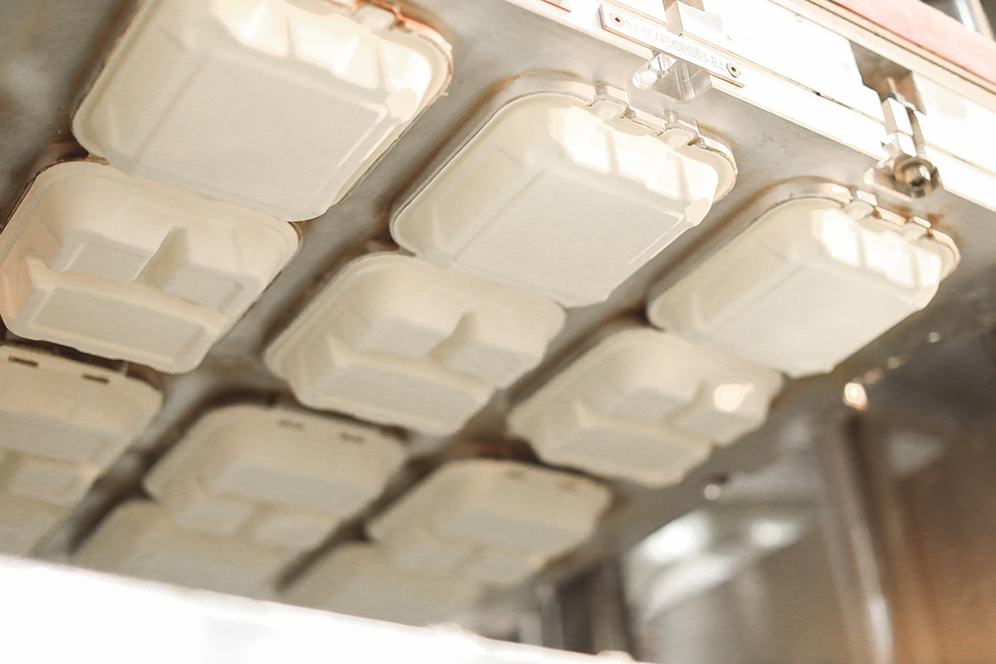
Pressure Molding Method
The pressure molding method is one of the primary techniques employed in shaping supplier bagasse food trays. During this process, a predetermined amount of prepared bagasse pulp is placed into specially designed molds. The mold cavities are precisely shaped to accommodate different tray sizes and designs.
a) High-pressure Compression Process Once filled with pulp, these molds are subjected to high-pressure compression using hydraulic presses or similar equipment.
The application of intense pressure compacts the pulp, removing excess moisture and binding the fibers together. This compression process ensures the formation of a strong and sturdy tray structure.
b) Temperature Control for Optimal Tray Shape To attain optimal tray shape and prevent distortion during compression, temperature control plays a vital role.
Maintaining specific temperatures within the mold cavity enhances the rigidity and durability of the resulting bagasse food trays. By carefully adjusting temperature parameters, manufacturers can achieve consistent tray shapes that meet industry standards.
Hot Press Molding Method
The hot press molding method is an alternate approach employed in manufacturing supplier bagasse food trays. a) Application of Heat and Pressure Simultaneously
In this technique, instead of using cold compression alone, heat is applied in conjunction with pressure to shape the trays. By heating the bagasse pulp under controlled conditions while simultaneously applying pressure, it becomes malleable and easier to mold into precise shapes.
This combination of heat and pressure ensures that intricate details and uniform thickness are achieved throughout each tray. b) Achieving Uniform Tray Thickness
The utilization of heat during hot press molding not only aids in shaping but also promotes uniform thickness across each tray. The even distribution of heat throughout the pulp softens it uniformly, allowing for consistent thickness when it solidifies into a rigid structure.
This meticulous process guarantees that supplier bagasse food trays possess a smooth surface and maintain their structural integrity when used for serving various food items. By carefully employing these molding techniques, manufacturers produce high-quality supplier bagasse food trays that meet stringent industry standards while adhering to sustainable practices.
Variety in Size, Shape, and Design Options
When it comes to supplier bagasse food trays, there is an impressive array of options available in terms of size, shape, and design. These trays are designed to cater to various needs and preferences of businesses in the food industry.
Suppliers understand that different types of food require different sizes and configurations for optimum presentation and functionality. Whether you are serving appetizers at a cocktail party or a full-course meal at a banquet, you can find bagasse food trays that perfectly suit your requirements.
Standard Sizes Available in the Market
In order to accommodate the diverse needs of consumers, suppliers offer standard sizes for bagasse food trays. These sizes are widely accepted by restaurants, catering services, food trucks, and other businesses involved in the food industry.
Commonly available sizes include small (6x6 inches), medium (8x8 inches), and large (10x10 inches) options. These standard sizes ensure consistency across different establishments while providing convenience for both customers and suppliers.
Customization Possibilities for Specific Requirements
Suppliers also understand that sometimes standard sizes may not meet specific requirements or preferences. To address this issue, they offer customization options for bagasse food trays.
This allows businesses to have trays tailor-made according to their unique needs. For instance, if you require a smaller tray for individual snack portions or a larger tray with multiple compartments for serving platters with various dips or sauces included without mixing them together—customization offers endless possibilities.
Different Shapes: Rectangular, Square, Round, etc.
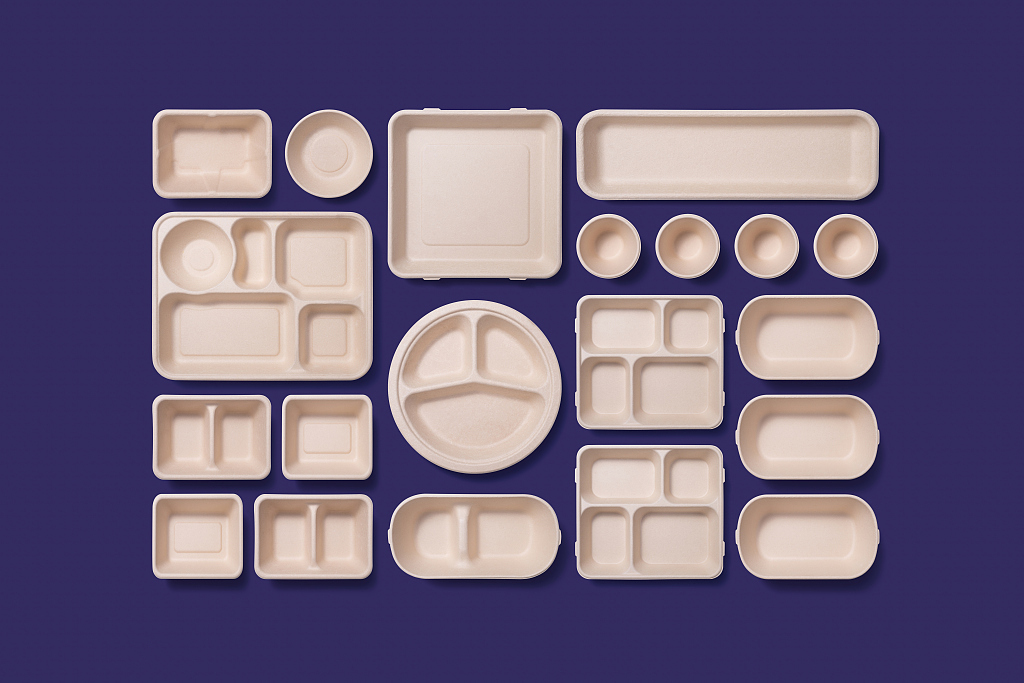
The shape of a food tray can play an essential role in its visual appeal as well as its functionality. Bagasse food trays come in various shapes like rectangular, square, round rectangles (oval), and even innovative designs that push the boundaries of traditional shapes. Rectangular trays are ideal for serving sandwiches, wraps, or sliced desserts, while square trays offer a more compact and elegant presentation.
Round or oval trays provide a unique touch perfect for appetizers or desserts that need to be showcased. The availability of different shapes allows businesses to choose the most suitable option based on their culinary creations and aesthetic preferences.
Compartmentalized Designs for Multiple Food Items
For those who wish to serve multiple food items in one tray without them mixing together, compartmentalized designs are an excellent solution. These designs feature sections within the tray that allow for separation and organization of different types of food. For example, a breakfast platter may require compartments for eggs, bacon, toast, and fruits.
Compartmentalized bagasse food trays not only enhance the presentation but also provide convenience to customers by keeping each item separate and easily accessible. Whether it's a buffet-style event or a takeaway service with multiple food options, these designs ensure efficiency in serving and minimize any risk of cross-contamination.
Innovative Applications of Supplier Bagasse Food Trays
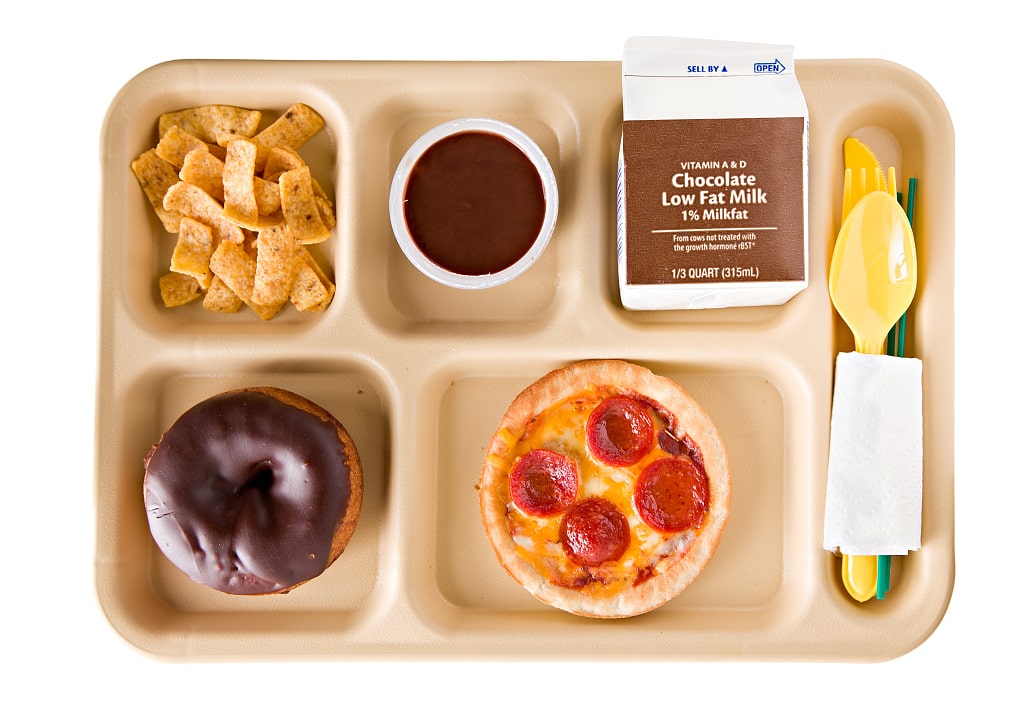
Supplier bagasse food trays have not only revolutionized the packaging industry but have also found innovative applications beyond their primary purpose. With their versatile nature and eco-friendly characteristics, these trays have become popular in various sectors.
One such application is in the hospitality industry, where these trays are used for serving meals at events, conferences, and hotels. Their sturdy and leak-proof design ensures that even delicate or saucy dishes can be served with confidence.
Moreover, the heat resistance of bagasse material makes it suitable for serving hot food items without compromising their quality. Another noteworthy application is in the takeaway and delivery business.
Many restaurants and cafes are now opting for supplier bagasse food trays to package their meals for takeaway or delivery. The compostable nature of these trays aligns perfectly with the increasing demand for sustainable packaging solutions, while still ensuring that the food remains fresh during transportation.
Supplier bagasse food trays offer a sustainable alternative to traditional plastic or Styrofoam trays. Their renewable and biodegradable nature significantly reduces plastic waste generation and helps lower carbon footprints.
Additionally, these trays exhibit excellent functional properties such as heat resistance and leak-proof design. The manufacturing process involves extracting pulp from sugarcane waste (bagasse) and molding it into various tray shapes through high-pressure compression or hot press methods.
The availability of standard sizes as well as customization options allows businesses to cater to specific needs. With innovative applications spanning across industries like hospitality and takeaway services, supplier bagasse food trays continue to gain popularity as a practical solution that supports environmental sustainability without compromising functionality or aesthetics.
By embracing these eco-friendly alternatives in our daily lives, we can contribute to a greener future while enjoying the convenience they offer. Together, we can make a difference by making conscious choices and embracing sustainable packaging solutions like supplier bagasse food trays.







